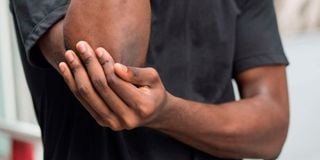Types of fractures, causes and treatment

A fracture is a break of the bone. It can be a simple break or involve bone shattering into many pieces.
What you need to know:
- Fractures can be a result of many things, from accidents to diseases. The treatment for a fracture will depend on the type and severity of the break.
- Common treatments include casting, splinting, surgery, and rehabilitation.
- X-rays are usually taken to confirm the diagnosis and determine the fracture type.
No one wakes up in the morning and decides to break their arm. Yet every year, people of all ages suffer a broken bone. Most are caused by falls or accidents, but they can also happen during sports or other physical activities. No matter the cause, fractures need to be treated because they can lead to long-term disability if not repaired correctly.
Fracture overview
A fracture is a break of the bone. It can be a simple break or involve bone shattering into many pieces.
There are diverse types of fractures, but they can broadly be classified into two categories: closed and open. A closed fracture is when the bone is broken but does not puncture the skin. An open or compound fracture is when the bone is broken and protrudes through the skin.
Common fractures
Stress fracture- These are tiny cracks in the bone that occur from overuse.
Greenstick fracture- This is when the bone bends and is partially fractured. It mostly affects children because their bones are softer.
Buckle or Torus fracture is a partial fracture where the bone buckles but does not entirely break.
Transverse fracture- This is when the break is at a right angle to the bone’s axis.
Oblique fracture- This is when the break is diagonal to the bone’s axis.
Comminuted fracture- This is when the bone shatters into multiple pieces.
Compression fracture- This type of fracture crushes the vertebrae.
An avulsion fracture is when a bone attached to the tendon or ligament gets pulled off the main bone—for example, hip bone, ankles, and elbows.
Pathologic fracture- This type of fracture occurs due to a disease, such as cancer, that weakens the bone.
Causes of these fractures
While accidents contribute to many fractures, there are other causes.
- Osteoporosis- This is a disease that weakens the bones and makes them more susceptible to fracture.
- Overuse- Repetitive motions such as running can lead to stress fractures.
- Childbirth- the process of childbirth can cause fractures, particularly in the pelvic bones.
Treatment for these fractures
The treatment for a fracture will depend on the type of fracture, as well as its location and severity.
Common treatments include:
- Casting- this is when a plaster or fiberglass cast is applied to the area to immobilise the bone while it heals.
- Splinting- this is similar to casting, but a splint is less bulky and can be removed for bathing and exercise.
- In some cases, surgery may be necessary to insert pins, plates, or screws to hold the bone in place.
- Braces- braces may be used to support the bone and prevent further injury.
- Rehabilitation- physical therapy may be necessary to regain strength and mobility once the bone has healed.
Diagnosing the fracture
The first step in diagnosing a fracture is to take a medical history and perform a physical examination. Your doctor will ask about the circumstances of the injury and whether you are experiencing any pain, swelling, or bruising.
X-rays are usually taken to confirm the diagnosis and determine the fracture type. In some cases, a CT scan or MRI may be necessary to get a more detailed view of the break.
Symptoms of a broken bone
- Pain
- Swelling
- Bruising
- Limited Mobility
- Deformity
- Grating or crunching sensation when moving the bone
Fractures first aid
In the event of a fracture, it is important to provide first aid until medical help arrives.
- Apply a cold compress (Avoid direct application of ice. Use a cloth to wrap the ice) to the area to reduce swelling and pain.
- Use a bandage or wrap to stabilise the area.
- Do not move the person unless need be.
- If there is bleeding, apply pressure to the wound.
- Provide CPR if the person is not breathing.
- Call for help.
Fracture complications
- Uneven limbs
- Infection
- Nerve Damage
- Joint Stiffness
- Pulmonary embolism
- Death




